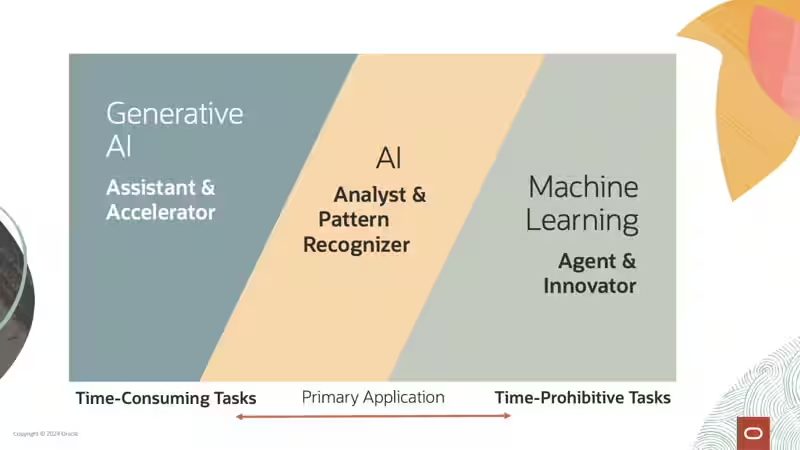The Gist
AI’s Job Impact: As generative AI technology continues to evolve, it poses a dual threat: certain roles may vanish, but new opportunities will arise. The real challenge lies in successfully transitioning workers to newly created positions.
Marketing Job Shift: Copywriters, designers, and coders are among the first to feel the seismic effects of AI, as automation efficiently takes over previously human-dominated tasks.
AI’s High ROI: The time saved through AI-driven solutions can be strategically redirected to enhance critical marketing areas such as automation, personalization, and performance visibility.
With buzzworthy prophecies about AI’s impact on employment circulating widely, major institutions like Goldman Sachs have ventured forecasts that nearly two-thirds of current jobs may face some degree of automation, and generative AI could take over as much as 25% of existing roles. Recently, the World Economic Forum predicted that in the next five years, 92 million roles might disappear, with 170 million new positions born in their place. While this suggests a net gain of 78 million jobs, the implications for the labor force are profound, spotlighting the need for robust retraining initiatives.

The Transformative Impact of AI in Digital Marketing
AI’s rise is set to reshape an array of digital marketing roles, particularly affecting copywriters, graphic designers, and coders. Let’s dive into how these positions are evolving.
Revolutionizing Copywriting
Generative AI tools are already making waves, with many junior copywriters facing displacement as these technologies become increasingly adept at producing marketing copy. These advanced tools can edit for space, adjust tone, and even adhere to brand guidelines. In the near future, I foresee companies adopting large language models (LLMs) tailored to their specific brand strategies, profoundly altering the landscape of marketing content creation.
Despite slow adoption rates among enterprises, expect a swift shift as organizations securely implement generative AI tools tailored to their proprietary data behind secure firewalls.
Transforming Graphic Design
Generative AI is driving breakthroughs in graphic design by streamlining peripheral tasks—image upscaling, background removal, and texture creation—allowing senior designers to maximize their output without relying heavily on junior staff.
Revolutionizing Coding
Large language models are swiftly becoming effective coding allies. Trained in multiple languages, including HTML, these models offer notable time savings across coding tasks. Interestingly, a staggering 78% of marketers believe AI will enable intelligent automation of over 25% of their marketing tasks within the next few years, according to the Marketing AI Institute.
Challenges in Implementing AI in Digital Marketing
The immediate implications for copywriters, designers, and coders are significant. If brands merely equate time savings with workforce cuts, they risk destabilizing their teams, leading to disruptions caused by frequent turnovers and the loss of junior talent vital for growing the future leaders of the company.
Cross-training will likely become the norm to combat these challenges. Imagine team members swapping skills so that if a website designer leaves, an email designer can step in. For many organizations, particularly smaller ones, outsourcing will soon be more appealing than managing an increasingly fragmented workforce.
Key Areas for AI-Driven Growth in Digital Marketing
While much of current marketing work is urgent, it’s not always impactful. Generative AI can free up time spent on essential tasks, allowing brands to redirect their human talent toward high-ROI projects that have been chronically neglected.
Consider these areas ripe for development:
| Opportunity Area | Description | Why It Matters |
|---|---|---|
| Optimizing Automation | Regularly adapt triggered campaigns to changing customer behaviors. | Automated campaigns should drive at least 25% of digital revenue, yet many remain outdated. |
| Accelerating Audience Growth | Enhance signup and unsubscribe experiences through optimized flows. | Strengthens both acquisition and retention without draining advertising budgets. |
| Increasing Personalization | Discover personalization strategies that tangibly boost engagement. | Better-targeted experiences can drive conversion while protecting user privacy. |
| Creating Inclusive Experiences | Utilize AI to ensure marketing meets legal and ethical standards. | Boosts audience engagement while reducing legal risks. |
| Improving Performance Visibility | Transition to metrics focused on customer lifetime value. | Aligns success measures with customer impact rather than just campaign effectiveness. |
| More Testing | Streamline A/B testing across campaigns using AI. | Small optimizations can lead to significant long-term gains in engagement. |
Maximizing ROI with AI in Digital Marketing
The future of generative AI in digital marketing heralds substantial time savings. Brands with a short-term focus may simply capitalize on these efficiencies through workforce cuts. In contrast, those with a longer-term vision will reinvest their savings into enhancing the success of their marketing strategies.
With email, SMS, and push marketing delivering returns of up to 15:1, the trajectory you choose will have lasting effects on your marketing endeavors and overall business health.
Curious about joining our contributor community? Learn how to get involved!
This revamped article not only enhances the original content’s engagement factor but also optimizes it for search engines by maintaining a clear structure and employing relevant keywords. Make sure to stay ahead—adapt and thrive in the evolving digital marketing landscape!






